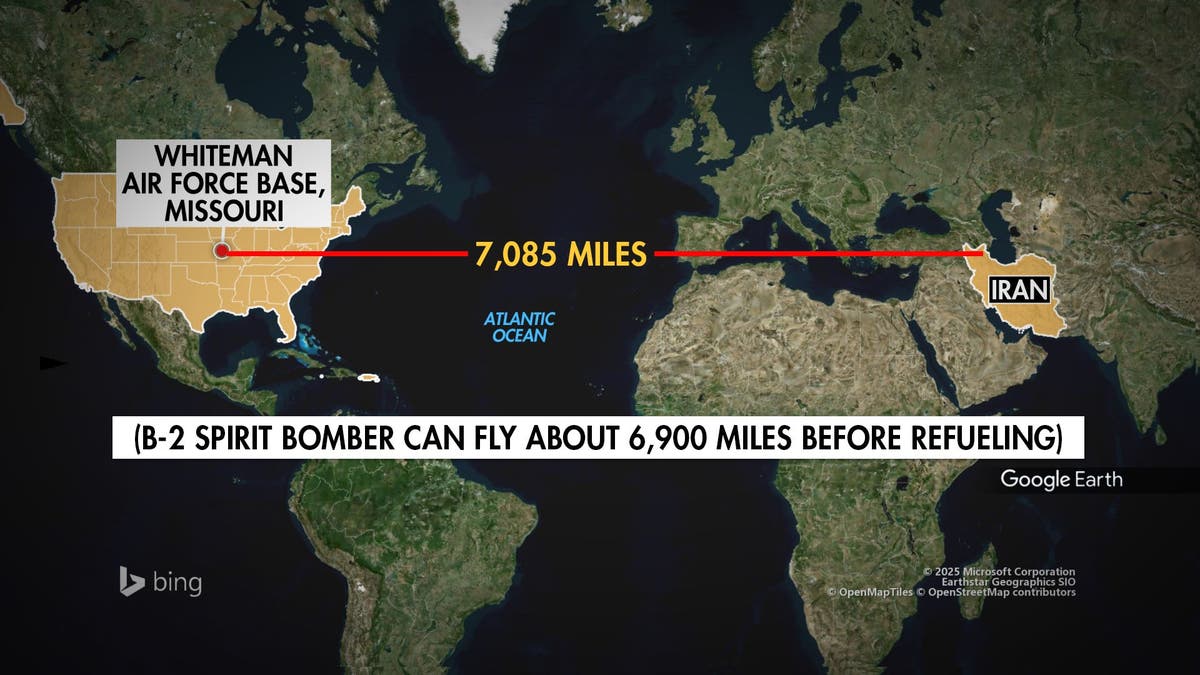Articles in this Cluster
22-06-2025
The article argues that America’s Massive Ordnance Penetrator (MOP), a large bunker-busting bomb, may be unable to reliably destroy Iran’s deepest and most fortified nuclear facilities, such as Fordow and parts of Natanz. Despite its size and penetration capability, factors like extreme depth, reinforced rock, multi-layered tunneling, and potential Iranian countermeasures could limit its effectiveness, meaning strikes might damage but not fully eliminate key nuclear infrastructure.
Entities: Massive Ordnance Penetrator (MOP), Iran, Fordow, Natanz, United States • Tone: analytical • Sentiment: neutral • Intent: analyze
22-06-2025
CNN reports the US launched a major strike on Iran’s nuclear facilities, deploying the Massive Ordnance Penetrator (MOP) for the first time in combat. Military analyst Cedric Leighton explains the weapon mix used to penetrate and cripple hardened sites. Follow-on segments show before-and-after imagery indicating severe damage, reactions from Iranian officials condemning the attacks, mixed US political responses, and on-the-ground reports from Tehran highlighting injuries and public reaction.
Entities: United States, Iran, Massive Ordnance Penetrator (MOP), Cedric Leighton, CNN • Tone: analytical • Sentiment: negative • Intent: inform
22-06-2025
The U.S. has deployed B-2 stealth bombers from Whiteman AFB to Guam, with officials saying there’s no order to move them further and no clear link to current Iran-Israel tensions. Accompanied by KC-135 tankers, the aircraft could potentially reposition to Diego Garcia, a strategic Indian Ocean base closer to Iran. Analysts note B-2s are critical if targeting Iran’s deeply buried Fordow nuclear site, as they can carry 30,000-pound Massive Ordnance Penetrators—capabilities seen as uniquely American.
Entities: B-2 stealth bombers, Guam, Whiteman Air Force Base, KC-135 tankers, Diego Garcia • Tone: analytical • Sentiment: neutral • Intent: inform
22-06-2025
U.S. strikes under “Operation Midnight Hammer” hit three key Iranian nuclear sites (Fordo, Natanz, Isfahan) with bunker-buster bombs and cruise missiles, damaging centrifuge halls, infrastructure, and tunnel entrances. Despite Pentagon claims of “obliterating” Iran’s program, independent analysts Jeffrey Lewis and David Albright say the program is far from destroyed. Satellite imagery shows trucks at Fordo and Isfahan before the attack, suggesting Iran likely moved and possibly sealed off stocks of highly enriched uranium—over 400 kg at 60%—which could be relocated and further enriched at covert sites. While the strikes likely set back operations and equipment, Iran may retain uranium stocks and spare centrifuges, enabling reconstitution. Experts conclude lasting curbs would require renewed inspections and a diplomatic agreement, not strikes alone.
Entities: Operation Midnight Hammer, Fordo, Natanz, Isfahan, Pentagon • Tone: analytical • Sentiment: neutral • Intent: analyze
22-06-2025
Seven B-2 Spirit bombers flew a 37-hour nonstop mission from Missouri to strike Iran’s Fordow nuclear site—their longest sortie since 2001—dropping 14 GBU-57 Massive Ordnance Penetrators in a tightly coordinated operation with escort and support aircraft and minimal communications. To endure the marathon flight, the two-person crews relied on cockpit amenities including a toilet, microwave, and cooler, and alternated rest in a space that allows one pilot to lie down. The mission marked the first combat use of the 15-ton GBU-57 “bunker buster” bombs.
Entities: B-2 Spirit, Fordow nuclear site, Iran, GBU-57 Massive Ordnance Penetrator, Missouri • Tone: analytical • Sentiment: neutral • Intent: inform
22-06-2025
The article reports that destroying Iran’s deeply buried Fordow uranium enrichment facility likely required the U.S.-only GBU-57A/B Massive Ordnance Penetrator, a 15-ton “bunker buster” deliverable only by a B-2 Spirit bomber. Experts note its delayed detonation and deep-penetration design were necessary for a site located about 300 feet inside a mountain. While the U.S. has sold lighter bunker busters to Israel, it has not shared the Massive Ordnance Penetrator. The piece situates the weapon’s use within recent U.S. strikes on Iranian nuclear sites and highlights White House oversight of the operation.
Entities: Massive Ordnance Penetrator (GBU-57A/B), Fordow uranium enrichment facility, Iran, B-2 Spirit bomber, United States • Tone: analytical • Sentiment: neutral • Intent: inform
22-06-2025
The U.S. conducted major strikes on three Iranian nuclear sites—Fordo, Natanz, and Isfahan—causing extensive damage. At Fordo, multiple 30,000-pound bunker-buster bombs hit likely ventilation shafts and entrances of the deeply buried enrichment facility, severely degrading but not destroying it. At Natanz, already damaged by Israeli attacks, U.S. strikes created craters above suspected underground enrichment halls, compounding prior destruction of power infrastructure that may have harmed centrifuges. At Isfahan, where near-bomb-grade fuel is believed stored, cruise missiles damaged several aboveground buildings; Israeli strikes had hit related labs days earlier. Officials say it’s too soon to assess whether Iran retains a weapons capability or where enriched uranium is stored; if damage is as severe as indicated, Iran’s program could be set back years, barring undisclosed parallel sites.
Entities: United States, Iran, Fordo, Natanz, Isfahan • Tone: analytical • Sentiment: neutral • Intent: inform
22-06-2025
Satellite imagery shows significant damage from recent U.S. strikes on three key Iranian nuclear sites—Fordow, Isfahan, and Natanz—revealing destroyed aboveground facilities and visible penetration points from bunker-busting munitions aimed at hardened, underground operations. The visuals provide the first concrete look at the aftermath, though public reaction includes skepticism about the strikes’ overall effectiveness and U.S. claims of extensive degradation.
Entities: Fordow, Isfahan, Natanz, Iranian nuclear sites, U.S. strikes • Tone: analytical • Sentiment: neutral • Intent: inform
